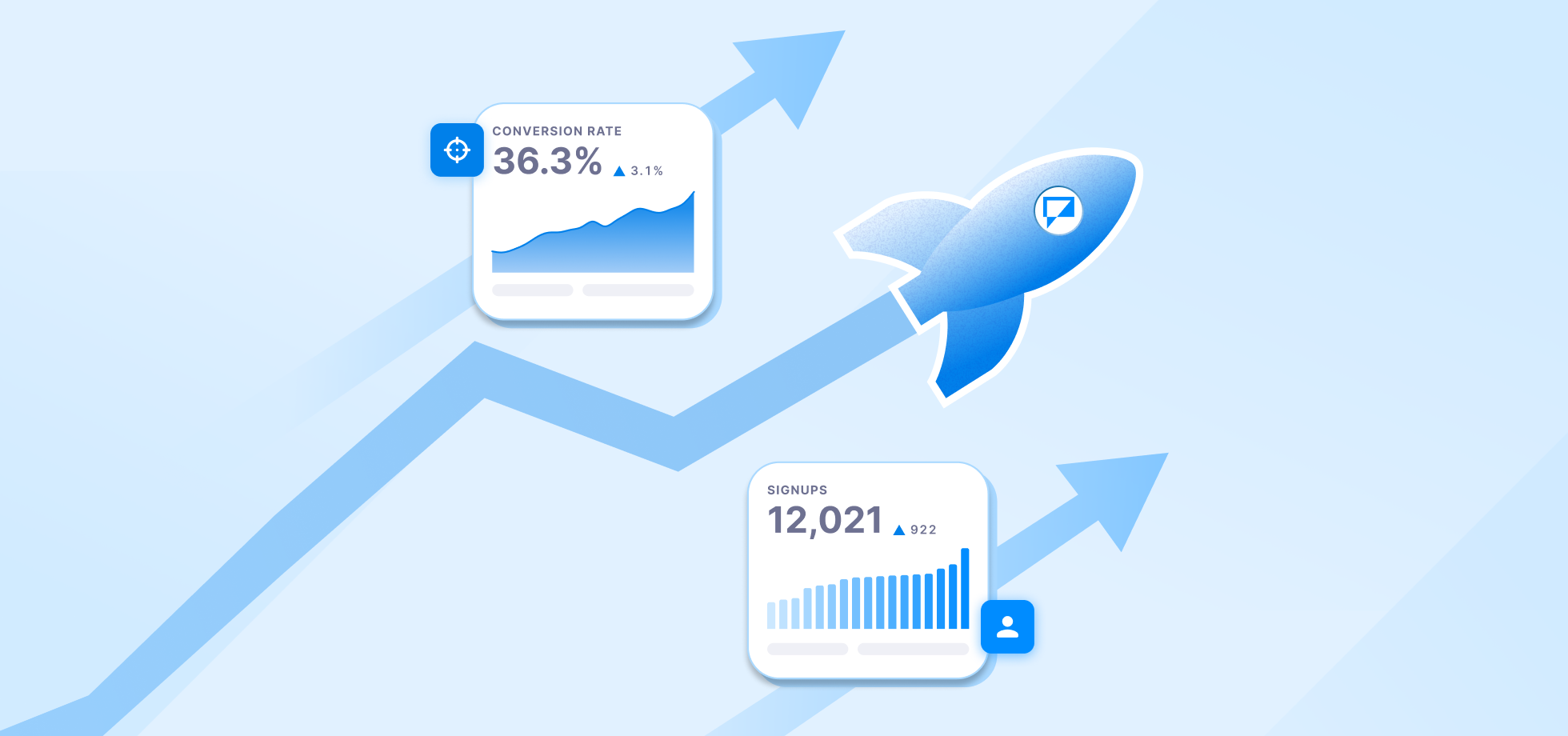
Communication is the cornerstone of every successful relationship, including business ones. Companies with strong omnichannel customer engagement retain 89% of their customers, compared to 33% for companies with weak omnichannel communication.
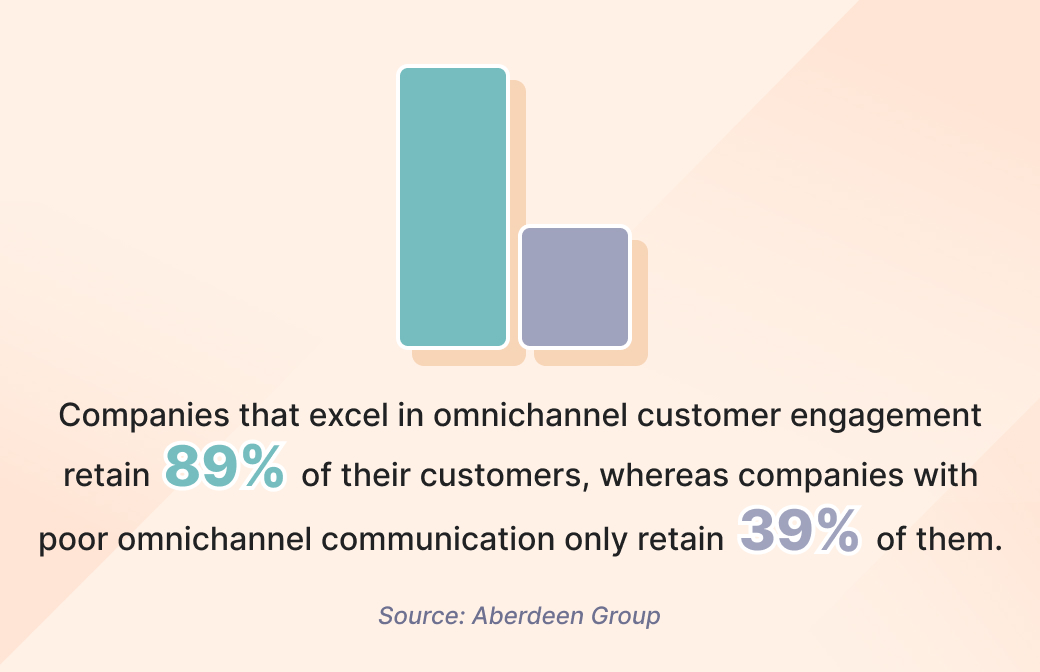
The following guide will explore strategies, examples, and platforms connected to omnichannel communication. It will teach you how to easily implement omnichannel communication in any type of business.
Keep reading to understand the mechanics of omnichannel communication and its real-world business impact.
What is omnichannel communication?
Omnichannel communication is a marketing strategy that integrates multiple contact channels to provide a consistent customer experience across all touchpoints.
A consistent omnichannel experience ensures that customers can switch between channels without losing the context of their previous interactions. This is particularly important because fluid, personalized interactions across channels help foster stronger relationships. When clients feel recognized and valued, they are more likely to become brand advocates.
📡 Offering a superior omnichannel experience can differentiate your brand from your competitors. Businesses that excel in providing an integrated customer journey are more likely to attract and retain customers in a competitive market.
Key components of omnichannel communication
Here are the most important omnichannel communication touchpoints you can use to boost customer engagement:
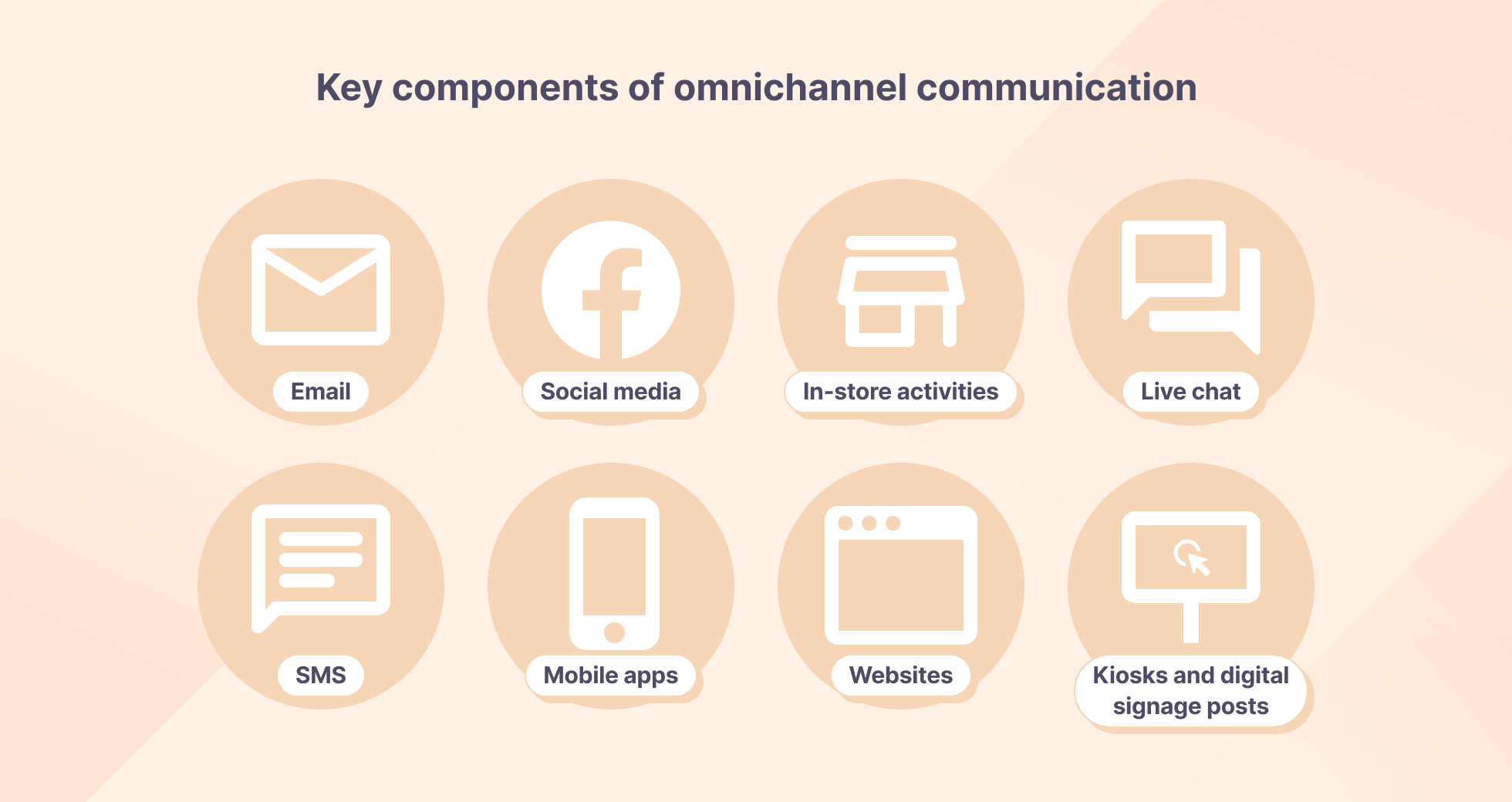
- Email: Great for generating personalized email campaigns and newsletters that reflect customer preferences and past interactions.
- Social media: Engage customers through platforms like Facebook, X, Instagram, and LinkedIn for customer service, marketing, and brand building.
- SMS: Ideal for sending personalized messages, updates, and promotions via text messages.
- In-store activities: These integrate digital and physical experiences, such as pickup for online orders, mobile app check-ins, and personalized promotions based on online behavior.
- Live chat: Real-time support on websites and mobile apps.
- Mobile apps: They integrate with other channels to offer personalized features and notifications for a glitch-free user experience (UX).
- Websites: They include features like chatbots and personalized content to enhance the web experience.
- Kiosks and digital signage posts: These provide product information, promotions, and interactive experiences that complement other channels.
The benefits of omnichannel communication
Omnichannel communication helps you improve customer satisfaction, boost retention, and create a more consistent brand experience.
Here’s how.
Enhanced customer experience
Staying consistent across all touchpoints creates a cohesive and professional image. This helps build trust and familiarity with your brand. When customers receive the same information regardless of the channel they use, they are less likely to get confused and frustrated.
By using integrated data from various channels, you can create highly personalized experiences that cater to individual customer preferences and behaviors. This generates more relevant product recommendations, marketing messages, and customized support interactions.
Increased customer loyalty and retention
Businesses’ continuous engagement with customers across channels enhances relationships, making them more meaningful and trustworthy. This, combined with the personalized approach mentioned above, contributes to deeper business connections and long-term loyalty.
Customers expect smooth transitions between channels, which can only be met using omnichannel communication. This approach ensures that they can switch from online to offline channels without disruption, meeting modern customer expectations and enhancing satisfaction.
Improved data collection and analysis
As previously mentioned, omnichannel communication provides data from multiple touchpoints. You can track customer behavior across different platforms, gaining insights into purchasing habits, preferred communication methods, and engagement patterns.
Omnichannel data can also be used to predict future trends and customer behaviors. You can leverage predictive analytics to anticipate customer needs, manage inventory, and develop proactive marketing campaigns.
Higher sales and conversion rates
Omnichannel communication reduces channel friction. It makes it easier for customers to complete their purchases, positively impacting your brand’s conversion rates. Also, by having all sales, marketing, and customer service systems in one platform, sales teams can access relevant customer information and close deals more efficiently.
Businesses that track customer interactions across touchpoints can create highly targeted marketing campaigns. If a customer shows interest in your product but does not make a purchase, you can retarget them with relevant ads and reminders on different platforms. You can also identify the most effective touchpoints for targeting and retargeting.
Efficiency and cost-effectiveness
When all teams have access to the same customer data, they exert less effort and use resources more efficiently. They can allocate resources to the channels that yield the highest returns, minimizing waste.
Automation tools within omnichannel platforms can take over repetitive tasks such as automated email responses, follow-ups, and customer segmentation, freeing up human resources.
How to create an omnichannel communication strategy
This is how to coordinate efforts across channels and develop a flawless communication strategy:
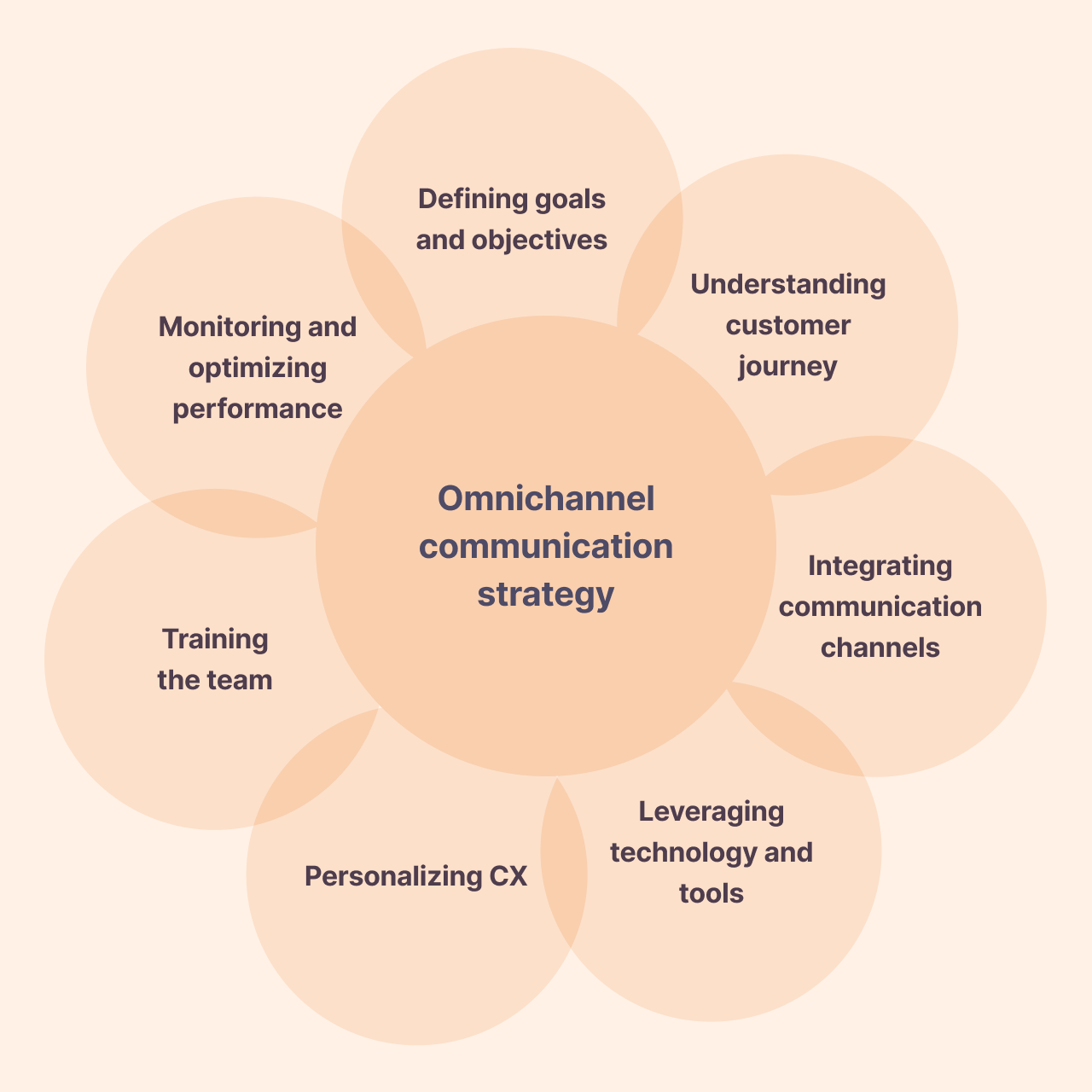
1. Define your goals and objectives
Start by identifying your business’s core objectives. Do you want to increase sales, improve customer satisfaction, or expand market reach? Then, think of how your omnichannel strategy can enhance the customer journey. Include goals like improving response times, increasing customer engagement, or providing a frictionless shopping experience.
Establish clear key performance indicators (KPIs) that align with your business objectives. These could include metrics like:
- Conversion rates
- Average response times
- Customer retention rates
- Net promoter score (NPS)
📊 Track your KPIs across all channels and analyze data to measure performance and identify areas for improvement.
2. Understand your customers’ journey
List all the possible points where customers can interact with your brand. This includes online touchpoints (website, email, social media, mobile apps) and offline touchpoints (in-store visits, call centers, events). Ensure that you cover every stage of the customer journey, from awareness to post-purchase support.
Tools like journey mapping software or even simple flowcharts can help create a visual representation of your customers’ journey. This map should highlight the sequence of interactions and the channels used at each stage:

Use surveys, interviews, and feedback forms to collect customer insights about their experiences. Analytics tools like Google Analytics, Adobe Analytics, or HubSpot help track customer behavior and interactions across different channels.
🤕 Look for patterns that indicate customer pain points, then consider how to tackle them. This could involve streamlining processes, integrating new technologies, or improving communication at specific touchpoints.
3. Integrate your communication channels
Use a customer relationship management (CRM) system to collect, store, and analyze customer interactions from various touchpoints. Ensure that your tools (CRM, marketing, and customer service platforms) communicate with each other and share data. Use application programming interfaces (APIs) and other integration tools to connect disparate systems.
Promotions, product information, and customer service responses should be consistent regardless of the platform. Use a content management system to manage and distribute content uniformly.
🎨 Create company guidelines that state how your message gets across, what your company’s values are, and what tone should be used in all communication.
4. Leverage technology and tools
Salesforce, HubSpot, and Zoho CRM are just a few platforms that help manage customer data, automate workflows, and provide insights into customer interactions. They play a decisive role in automating repetitive tasks and tracking customer engagement across channels.
Artificial intelligence (AI)-powered chatbots (e.g., Drift, Intercom) provide instant customer support and engage with customers in real time. When combined with tools like Dynamic Yield and Optimizely, they help create personalized content and product recommendations based on customers’ behavior.
🤖 Platforms like SAS and IBM Watson employ machine learning to analyze data and anticipate customer needs, helping you tailor your communication strategy accordingly.
5. Personalize the customer experience
Use customer insights, such as current behavior, location, and recent activities, to better grasp the context of an interaction. Then, craft messages that are content-relevant. For example, if a customer is browsing winter jackets, recommend complementary items like scarves and gloves.
Set up automated triggers for specific actions like cart abandonment or follow-up emails after a purchase. Use geolocation technology to send location-specific offers and information. For instance, if a customer is near one of your stores, send them a special in-store discount.
6. Train your team
Ensure that all staff understand your company’s omnichannel approach and their role in it. Create and maintain a repository of resources, including training manuals, frequently asked questions, and how-to guides. Make sure that your staff can easily access the repository while at the office or at home.
When pure theory fails, real-world scenarios and role-playing exercises provide hands-on training.
7. Monitor and optimize performance
Use analytics tools like Google Analytics, HubSpot, Salesforce, Mixpanel, or Hotjar to track the metrics defined earlier. Depending on your business needs, evaluate the effectiveness of your communication strategy weekly, monthly, or quarterly. Compare performance across different channels to understand which are most effective.
Establish a continuous feedback loop with your customers to gather insights and suggestions. Use surveys, social media listening tools, and direct feedback to understand their experiences and expectations. Implement advanced analytics, AI-driven insights, and automation tools to streamline processes and improve efficiency.
Five omnichannel communication examples
The following examples highlight the power of omnichannel communication across various industries.
SaaS: Textmagic

Image source: support.textmagic.com
Our omnichannel communication strategy ensures that clients receive consistent and personalized support regardless of their chosen channel.
For example, a client might search the knowledge base for a solution. If they don’t find an answer, they can escalate the issue through our live chat for immediate assistance. If the problem persists, they can continue the conversation with our support team via email or phone without repeating their issue, as all interactions are logged and accessible across channels.
Retail: Starbucks
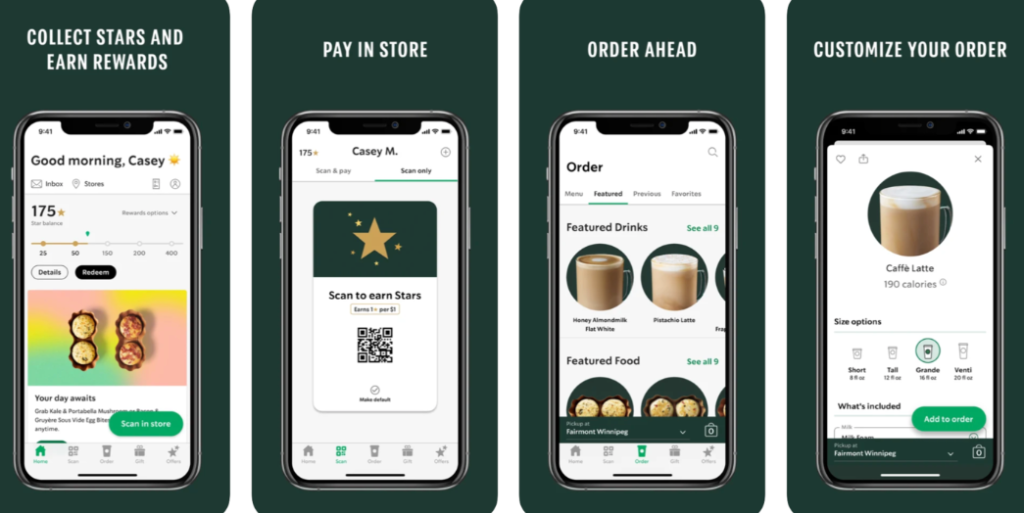
Image source: www.indigo9digital.com
Starbucks’ mobile app allows customers to order and pay ahead for an effortless pickup experience in-store. This bridges the gap between digital and physical shopping by providing convenience and reducing wait times.
Financial services: Bank of America

Image source: medium.com
Bank of America strives to ensure that customers can access and manage their services effortlessly across multiple channels.
Customers can deposit checks using the mobile app, receive a real-time confirmation, and then immediately view the updated account balance via the online banking platform. If issues arise, they can contact customer support through the in-app chat, phone, or visit a local branch for assistance.
Healthcare: Cleveland Clinic

Image source: www.questionpro.com
The Cleveland Clinic creates flowing patient experiences via omnichannel communication.
After a virtual consultation, patients can use the MyChart app to schedule a follow-up appointment. Once they arrive at the clinic, they can use digital kiosks for a quick check-in and receive directions to their doctor’s office. Post-visit, patients receive an email summary of the consultation and a reminder for any necessary lab tests.
E-commerce: Amazon

Image source: blog.hubspot.com
Amazon uses social media to engage with customers through targeted ads and promotional content. During major sales events like Prime Day, Amazon runs coordinated campaigns across platforms like Facebook, Twitter, and Instagram to build hype and drive traffic to its site. Existing customers also receive emails regarding these promotions.
Best omnichannel communication platforms
There are many options available on the market. However, the ideal omnichannel communication platform should tick the following boxes:
✅ Customizable dashboards
✅ Ability to integrate natively with business applications
✅ Features for personalized communication based on customer data and behavior
✅ Automation capabilities for marketing campaigns, service workflows, and follow-ups
✅ Detailed reporting tools to measure KPIs and return on investment (ROI)
✅ Ability to scale with business growth
✅ Quality user support
We’ve hand-picked the following platforms as true industry standouts.
Salesforce Marketing Cloud
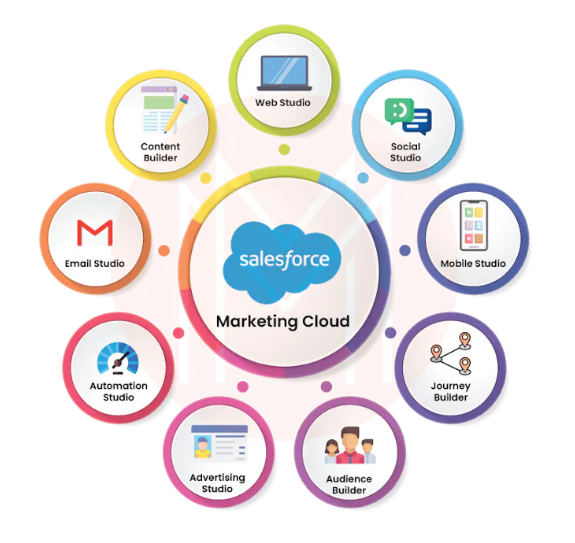
Image source: mindmajix.com
Salesforce Marketing Cloud offers a comprehensive suite of integrated tools for email marketing, social media marketing, mobile messaging, and online advertising. They all work within the Salesforce ecosystem.
Features
- Multi-channel marketing campaign automation
- Tools for designing, sending, and tracking email campaigns
- Visual workflow builder for creating personalized customer journeys
- Integration with major ad platforms like Google, Facebook, and Twitter
- Reporting and visualization tools to measure campaign performance and ROI
- Social media management tools for listening, publishing, and engaging across platforms
Benefits
- Provides a complete view of the customer across all touchpoints
- Can scale with businesses of all sizes, from small enterprises to large corporations
HubSpot
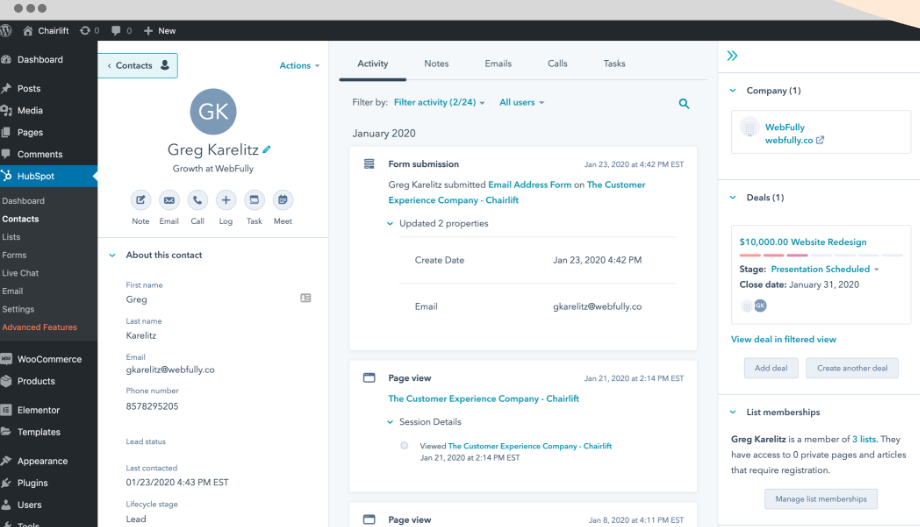
Image source: www.hubspot.com
HubSpot is a leading inbound marketing, sales, and customer service platform. It helps businesses grow by providing the right tools to attract visitors, convert leads, and close deals.
Features
- Email delivery services via SendGrid
- Operates in over 180 countries, with local connectivity options
- Cloud-based contact center solution integrating voice, messaging, and digital channels
Benefits
- Enhances lead nurturing and conversion with automated workflows
- Reduces support workload with self-service options and automation
- Enhances visibility into the sales pipeline for better forecasting and management
Zendesk

Image source: getvoip.com
Zendesk is a comprehensive customer service and engagement platform designed to help businesses provide integrated support across multiple channels.
Features
- User-friendly interface
- Customer self-service options
- Customizable dashboards and detailed reporting
- AI-powered chatbots and automation for instant responses
Benefits
- Centralizes customer interactions
- Helps you make informed decisions based on real-time data
- Reduces the time agents spend switching between different tools and systems
- Provides training and resources through the Zendesk Community and Help Center
Twilio
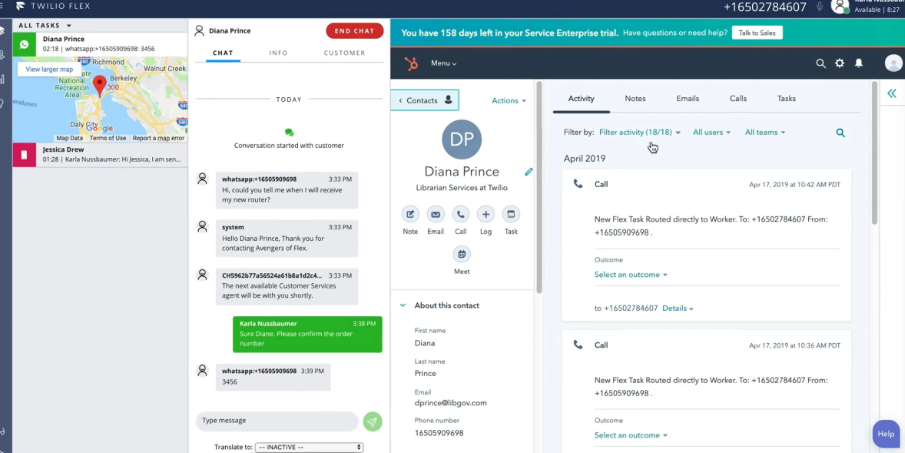
Image source: getvoip.com
Twilio enables you to build, manage, and optimize communication channels, including voice, text messaging, video, and email. Known for its robust API and flexible infrastructure, Twilio allows developers to integrate communication capabilities directly into their applications, websites, and services.
Features
- Cloud contact center
- Software development kits
- Real-time video and audio capabilities (video recording, multi-party calls, screen sharing)
Benefits
- Consistent performance across different regions with local connectivity options
- The flexible pricing model allows you to control costs and only pay for services used
- Allows for scalability to handle increasing communication needs as your brand grows
Adobe Experience Cloud
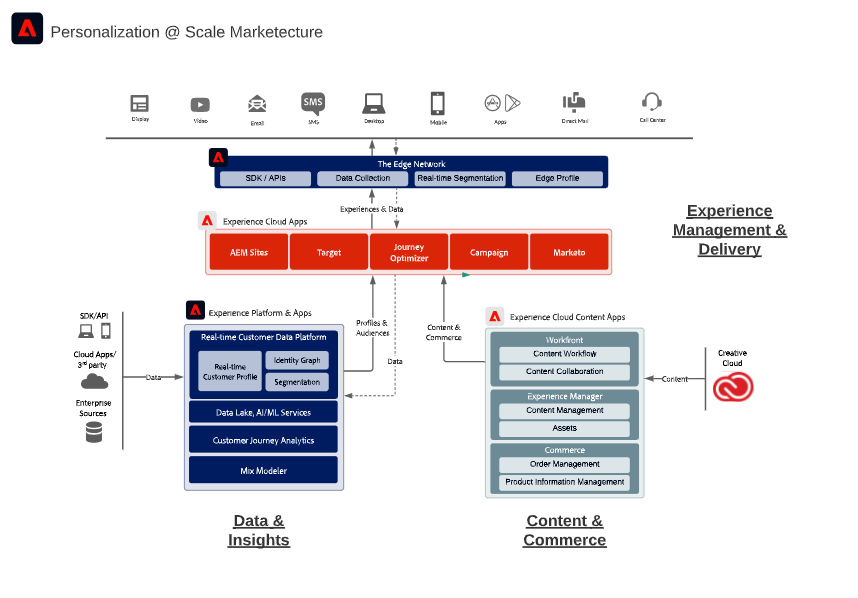
Image source: experienceleague.adobe.com
This comprehensive suite of digital marketing solutions is designed to help you deliver consistent customer experiences across all channels. It integrates various tools for marketing, advertising, analytics, and e-commerce, enabling you to create, manage, and optimize omnichannel campaigns.
Features
- Digital asset management for storing, organizing, and retrieving digital assets
- Website search capabilities with customizable and AI-powered search features
- Combined data from various sources to create single, complete customer views
Benefits
- Facilitates collaboration between marketing, sales, and IT teams
- Allows for continuous optimization of marketing campaigns to maximize ROI
- Streamlines marketing operations by integrating content management, campaign execution, and analytics
Elevate customer interactions with omnichannel communication
Omnichannel communication ensures that customers benefit from personalized and efficient interactions across various channels.
If you think building an omnichannel strategy is daunting, you probably haven’t had access to the right resources. This guide proves that an effective strategy can be achieved with resources well within anyone’s reach and that the benefits far outweigh the initial effort.
As a final word, we would like to leave you with some food for thought thanks to Elisa Montanari, head of organic growth at Wrike:
“With the communication channels evolving, you’d think we’d be connecting far more easily with clients, coworkers, and colleagues. However, the data shows that in late 2023, 30% of people believed that communication with teammates and clients had become more challenging. More isn’t always better because too many options can often cause fragmented communications, wasted time, and misunderstandings. We must only use additional communication channels when we can streamline the process and add real value to our interactions. If omnichannel isn’t making your customers’ and teams’ lives easier, you must rework, centralize, and build supportive structures for true efficiency, consistency, and streamlining.”
Frequently Asked Questions (FAQs)
While both involve multiple platforms, multichannel strategies often treat each channel separately. Omnichannel communication, on the other hand, connects these channels so that conversations and customer data stay unified across all touchpoints.
It lets customers switch between channels without losing context, which builds trust and convenience. A consistent experience across platforms helps reduce friction, improve response times, and strengthen brand loyalty.
Examples include a customer starting a conversation via live chat, receiving a follow-up by email, and getting appointment reminders via SMS, all without needing to repeat their issue or reintroduce themselves.
Common challenges include integrating different platforms, maintaining message consistency, training teams to manage multiple channels, and ensuring real-time updates across systems.
Begin by identifying the channels your customers already use, then focus on connecting them through shared data and unified messaging. Start small with two or three integrated channels, and expand as your workflow and tools evolve.
Related articles
Drive sales and provide support on every channel with Textmagic Chat
Ever wished a customer support agent would reply fas...
From leads to deals: Navigating the 7 sales pipeline stages
Lost deals are a thing of the past. Learn how to opt...
How to create a loyalty program customers will love
Fostering customer loyalty nowadays involves more th...
6 Strategic communication plan templates for your team
Have you ever wondered how to ensure everyone in you...
What is product-led growth, and how to apply it to your SaaS company
PLG (product-led growth) is gaining popularity as th...




